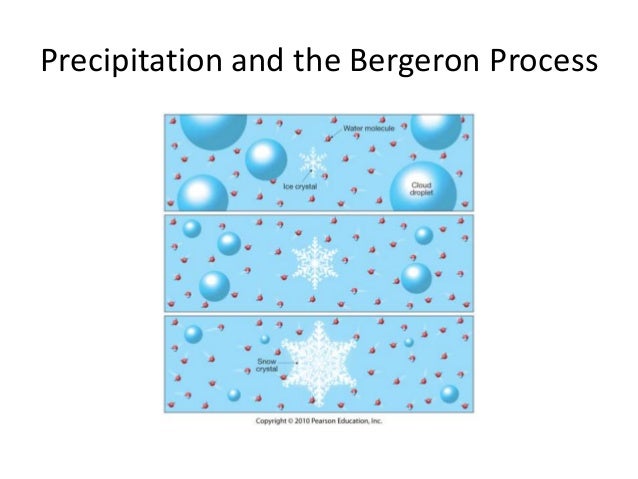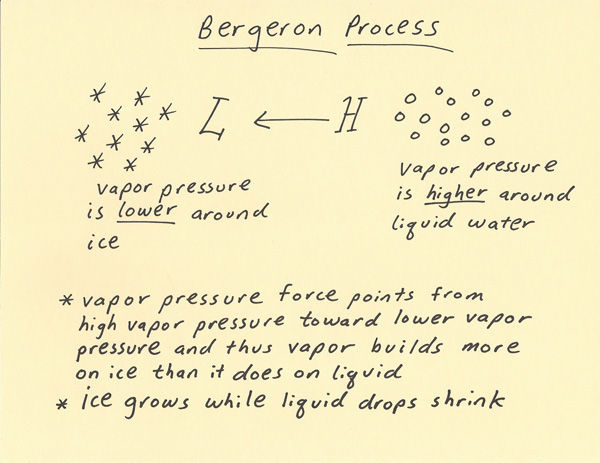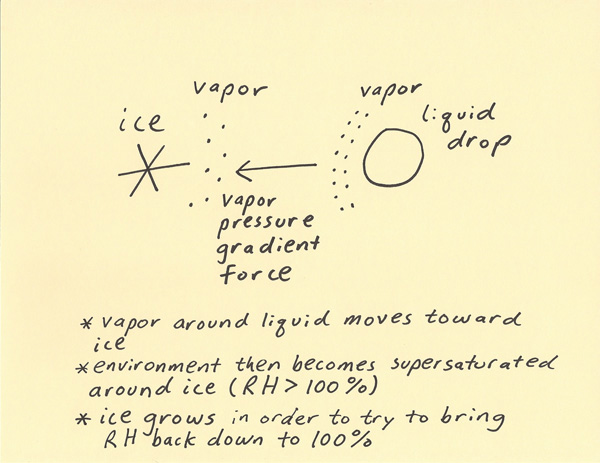Bergeron process
The Bergeron - Findeisen process (after Tor Bergeron and Walter Findeisen ) describes the formation of large droplets in clouds. Requirement are high -reaching mixed clouds in which supercooled water droplets and ice crystals are in the temperature range from -10 ° C to -35 ° C next to each other.
With the same surface shape and temperature of the saturation vapor pressure of water is higher than ice cream, so that the Cloud air is unsaturated over the water droplets, with the result that the supercooled droplets to evaporate and the resulting water vapor is reflected by desublimation of the ice crystals. The ice crystals increase in size further by freezing of supercooled water droplets as well as by wedging or electrostatic attraction of further ice crystals. Above a certain size, the ice crystals can not longer be held and begin to fall from the thermal.
Upon the failure by the cloud or more underlying cloud droplets are collected, which further increase the size and rate of fall. When the 0 ° C threshold is exceeded (actually the melting point ) melt the crystals and reach the ground as rain großtropfiger.
If the drop distance is cold enough, so especially in the winter, but also in special weather conditions in the summer, remains under the melting process, so that the precipitation in the form of snow falls.










